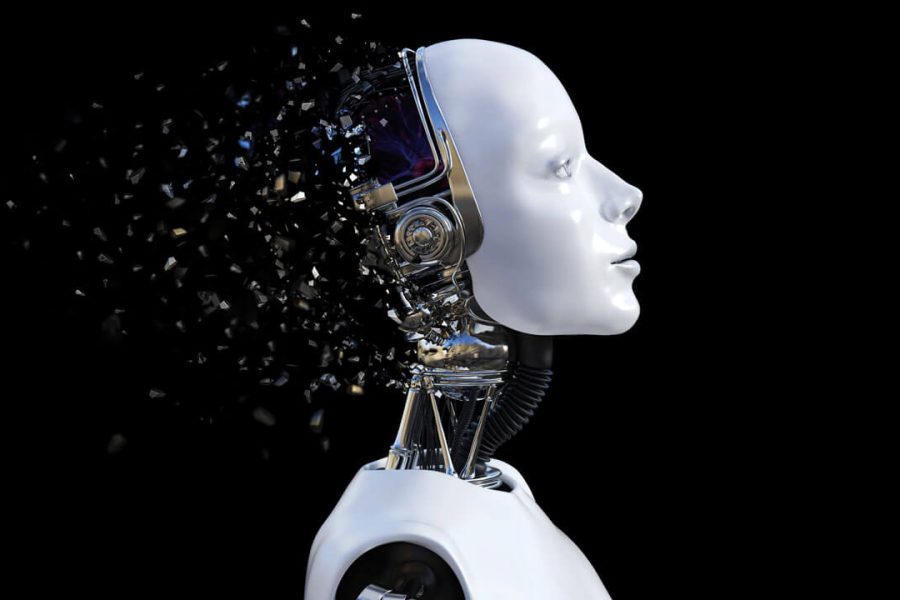When you’re a kid, your parents have to teach you what’s dangerous, or you’ll likely stumble into all sorts of chaos and injury. Hot stoves, sharp knives, electrical outlets—all kinds of dangers seem wonderful to you as a kid, but you need to learn that they’re dangerous. Ironically, that’s how our entire species works. We have a long history of believing that things are wonderful until we learn how bad they really are.
10. Agave is now considered more unhealthy than refined sugar

In the early to mid-2000s, agave became a popular sugar substitute, with many websites and media outlets declaring it a healthy replacement. Sahara , which we were all used to. This was partly due to the way it affects your glycemic index and the fact that it doesn’t raise your overall blood sugar levels as high as sugar. You can still get agave nectar in many places, as it is still widely marketed as an alternative to sugar, but the science about it being healthier and better for you has taken a bit of a turn. You can now find articles that will tell you that it actually worse than pure sugar. It is so processed that any advantages it had over sugar are lost.
Agave syrup now compared to high fructose corn syrup , not sugar, a product that has been ridiculed for decades. Fructose is very easily converted to fat, so you are likely to gain weight if you consume agave. It can have negative effects on your metabolism, your liver, and contribute to diabetes. It has a low glycemic index because it is fructose, not glucose, which makes it seem deceptively healthy as long as you ignore all of its other effects, which is exactly what the companies marketing it did.
9. The atomic bomb tests were advertised as a tourist attraction.

There’s no end to the things you can do to draw a crowd. Sure, people love watching sports, but you can get them to watch board games, Twitch streams, unboxing videos, cars on fire, and a million other things. As a species, we’re easy to entertain. So easy that during the height of atomic bomb testing, a tourism industry sprang up to watch the Nevada nuclear tests. Try to imagine doing that today.
In the 1950s, people would throw parties in Las Vegas where everyone would gather at a safe distance. Bomb test , shown on television in 1952, made it all seem exciting and ushered in the era of atomic tourism. Las Vegas began calling itself Atomic City. The Chamber of Commerce published a schedule of the blasts so people would know when to come see the explosions, and even a list of places to get the best views.
At the Nevada Test Site was conducted 235 atomic tests , and the city of Las Vegas openly advertised it as a tourist attraction until 1963. The area and the Limited Test Ban Treaty moved testing underground.
8. Nutella once claimed to be healthy.

Nutella is still very popular and you can find it everywhere. Nutella in Starbucks , Nutella in McDonalds , Nutella in Krispy Kreme . Of course, this makes sense, because it's a mixture of chocolate and hazelnuts, a winning combination for any dessert or sweet treat. The problem is that for years, Nutella marketed its product as healthy, when in fact, it was just icing for a cake.
The company was accused of deceptive advertising because their commercials suggested that it was part of a healthy diet. This language is sketchy because you can eat a healthy meal, add a bowl of pure lard, and say that lard is part of a healthy meal. So when a California mom sued the company, she claimed that she was deceived by the commercials, causing her to not realize that she was feeding her four-year-old a relatively unhealthy product.
The lawsuit was converted into a class action lawsuit, and Nutella paid 3 million dollars At the time, people ridiculed this, arguing that TV ads were a bad way to get nutritional information and that Nutella's main ingredients were just sugar and fat. And while that's true, as a defense, it seems to suggest that it's okay to lie if you feel your lie is so stupid that no one will believe it.
In addition to paying the class action lawsuit, the company agreed Don't post ads anymore , which created the impression that their product was useful in any case.
7. Lysol was advertised as a contraceptive.

Vintage ads are always interesting to look at because there was once a time when the advertising world was basically the Wild West. There were no rules or regulations, and a company could seemingly say almost anything and get away with it, no matter how crazy it might seem by today's standards. Take the household cleaner Lysol, for example.
During the Great Depression, Lysol ads touted its properties as a feminine hygiene product, claiming that it was safe and gentle, and that women who didn't use it risked losing their husbands. And as uncomfortable as that sounds, it only got worse. Birth control was illegal, and the world was far more concerned with decency at the time. So the ads weren't really about feminine hygiene, they were about birth control. The company suggested that Lysol could prevent pregnancy, and apparently that convinced a lot of people. Lysol was the most popular method of contraception of that era.
Just to be clear, Lysol is not a good form of birth control, and the formula, while different from today's, was not at all healthy to take internally. Reports indicate that by 1911, doctors were recording 193 cases of Lysol poisoning and 5 deaths as a result of cervical irrigation with this product. And in any case, almost half of the women who used it still became pregnant.
6. Vaping was once promoted as a healthy alternative to smoking.

Hey, remember vaping? It seems like such a long time ago. While vaping is still gaining momentum in the world, it's definitely not on the upward trajectory it was when it first came out. Back then, vaping open And often called a healthy alternative smoking.
A number of people who used e-cigarettes to vape THC became seriously ill, and by 2019 42 of them died. Much of the marijuana sold for e-cigarettes includes There is dangerous additives , and they may contain substances not listed on the labels. The AMA has recommended banning all e-cigarettes that do not meet standards as a means of helping people quit smoking regular cigarettes. Association of Family Doctors notes that there isn't enough long-term data to know whether vaping poses the same cancer risk as smoking tobacco, but that doesn't make them healthy. They've been linked to heart and lung disease and addiction.
5. Incineration was promoted as a clean alternative to landfill.

Garbage and waste have been a huge problem for many years. We produce a lot of garbage and do not always dispose of it properly and safely. Recycling efforts have been going on for many years and the situation is changing, but it is not enough and landfills continue to fill up.
In the past, the idea of burning trash has been promoted as an alternative to landfills. It is sometimes called waste-to-energy, under the pretense that burning trash as fuel can generate energy to offset the effort. But the side effects of burning waste are by no means positive, as residents can attest. Dorala, Florida , where they live downwind from a waste incineration plant that typically leaves the city with the smell of burning trash.
In addition to the stench, burning garbage produces a lot oftoxic chemicals , such as dioxins and heavy metals. Proximity to waste incineration plants has been linked to numerous diseases and miscarriages.
4. Sugar was positioned as a healthy food

Sugar is one of those ingredients that people have a love-hate relationship with. People are constantly trying to cut back on it, but it’s naturally found in tons of food, and let’s be honest, sweet tastes good. In an effort to improve sugar’s image, the sugar industry worked hard in the 1960s to convince people that sugar was good for them.
Scientists were paid to downplay the links between sugar and things like heart disease . Instead, the blame was shifted to fat. Advertisements from the 60s and 70s made it seem like fat slowed you down, and sugar gives energy to get through the day. Some ads would push the boundaries of reason by suggesting that pure sugar is even healthier than something like grapefruit .
3. Quaaludes were originally intended to treat malaria.

Quaaludes are most closely associated with the 1970s and Bill Cosby, for essentially the same reason. The recreational sedative is almost unknown today, thanks to the fact that it is no longer legal due to how easily it was abused and how dangerous it was.
Despite their current classification, which puts them in the same boat as heroin, and their reputation as a date-rape drug, when Quaaludes were first developed, the goal was to save lives. The drug was not intended as a sedative or a sleep aid; in fact, it was designed as antimalarial drug .
The drug, known as methaqualone, was developed in the 1950s and on in fact it didn't work at all as an antimalarial. However, the sedative effect was considered beneficial and for this reason it was widely prescribed because it was considered less dangerous until it was widely abused.
2. Trans fats were once considered healthier than regular fats.
When companies want to tell you pretty quickly that their product is healthy, you'll find a few short labels on the packaging. Things like "cholesterol-free" or "low fat" and so on. Things that can fit in the corner of a box or bag and are often just fancy terms to try to get your attention. For example, you'll often see "zero cholesterol" on packages of things like potato chips, even though there's never been any cholesterol in potatoes to begin with, so it's not like the company is trying hard to make them healthy.
Another trendy term you will often see is “zero trans fat.” No one likes trans fats, right? They raise bad cholesterol and lower good cholesterol in the body, which significantly increases risk of heart disease But they became widespread because they were once advertised as more beneficial for health than "regular" fats because saturated fats were widely associated with poor health. Scientists knew they were potentially harmful to health as early as the 1950s, but officially labeled them as such until 2013 .
1. Cigarettes were once used to treat asthma.

We've already covered e-cigarettes, so why not go straight to the source and buy cigarettes. It's pretty well known that the health risks of cigarettes have been hidden for a long time, but there's a distinct difference between keeping quiet about how something is harmful and actively claiming that something can actually benefit your health. In fact, there was a time when cigarettes were advertised as a cure for asthma.
A product called " Page inhalers " was marketed as a medicinal cigarette for "temporary relief of asthma attacks." The directions were pretty simple. Supposedly, at the height of an asthma attack, you exhale all the air from your lungs, then inhale the smoke from the cigarette, filling your lungs, then hold it for a few seconds before exhaling again. Try it four times a day!
Even though they look like a product of the early 1900s, you could still find doctors prescribing them. in the 1990s . Cigarettes contained ingredients that could actually relieve the symptoms of asthma attacks, but the problem was that they were delivered through a cigarette, so despite all the relief you might get legally, the smoke would still make the problem worse, so these things don't exist anymore.













Оставить Комментарий